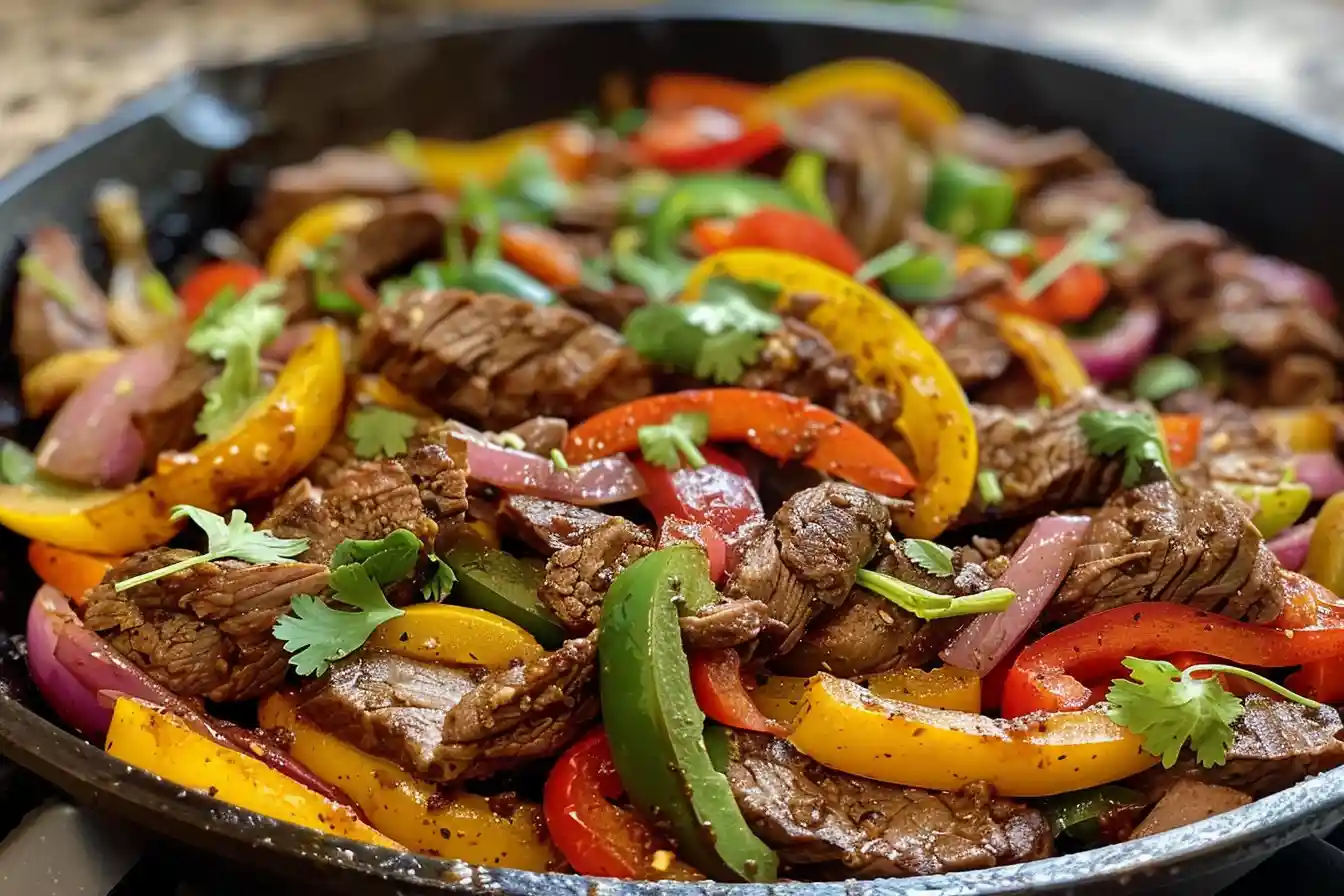What is the difference between soy sauce and soy glaze? These two kitchen essentials, though both derived from soybeans, serve distinct roles in cooking. Soy sauce is a classic condiment with deep roots in Asian culinary traditions, celebrated for its salty and umami-packed taste. In contrast, soy glaze offers a thicker, sweeter alternative, perfect for adding a shiny, flavorful finish to a variety of dishes. Despite their shared origin, their flavors, textures, and culinary applications set them apart.
Importance of Understanding the Differences
Understanding the differences between soy sauce and soy glaze is essential for any home cook or chef. These condiments can drastically alter the taste and texture of your dishes, so knowing when to use each is key to achieving the desired result. Whether you’re marinating, stir-frying, or finishing a dish, choosing the right condiment can make all the difference.
Article Scope
In this article, we’ll explore the distinctions between soy sauce and soy glaze, from their production processes to their culinary applications. You’ll learn about their nutritional profiles, health considerations, and how to choose the right one for your needs. We’ll also delve into some common myths and answer frequently asked questions to provide a comprehensive understanding of these two versatile condiments.
What is Soy Sauce?
Historical Background
Soy sauce has been a staple in Asian cuisine for over 2,000 years, with its origins tracing back to ancient China. It was originally created as a way to extend the shelf life of salt, which was a valuable commodity. Over time, soy sauce evolved into the complex and flavorful condiment we know today, playing a central role in the culinary traditions of China, Japan, Korea, and beyond.
Production Process
Soy sauce is made through a fermentation process that involves soybeans, wheat, salt, and water. The soybeans are steamed, and the wheat is roasted, then mixed with a specific mold culture called Aspergillus. This mixture is left to ferment for several months to years, depending on the desired flavor profile. The fermentation process breaks down the proteins in the soybeans and wheat, producing a liquid that is rich in amino acids, which gives soy sauce its distinctive umami flavor. After fermentation, the liquid is pressed, pasteurized, and filtered to create the final product.
Types of Soy Sauce
- Light Soy Sauce: This type is lighter in color and more salty, commonly used in cooking to season and add a savory flavor to dishes without overpowering them.
- Dark Soy Sauce: Dark soy sauce is aged longer, giving it a richer color and a slightly sweeter, less salty flavor. It’s often used to add color and depth to dishes.
- Tamari: Originally from Japan, tamari is a byproduct of miso paste production and is usually gluten-free, making it a popular alternative for those with gluten sensitivities.
- Shoyu: A Japanese soy sauce that contains a higher percentage of wheat, shoyu is typically sweeter and more complex in flavor than Chinese soy sauces.
Nutritional Profile
Soy sauce is relatively low in calories, with about 10-15 calories per tablespoon, but it is very high in sodium. A single tablespoon can contain over 900 mg of sodium, which is nearly 40% of the recommended daily intake. Soy sauce also contains small amounts of protein, carbohydrates, and various micronutrients, including manganese, vitamin B3 (niacin), and amino acids that contribute to its umami flavor.
What is Soy Glaze?
Definition and Overview
Soy glaze is a thicker, sweeter version of soy sauce, created by reducing soy sauce with sweeteners such as sugar or honey. The result is a syrupy, flavorful glaze that clings to food, making it ideal for finishing dishes. Soy glaze adds a shiny, appetizing coating to foods, enhancing both their appearance and taste.
Production Process
The production of soy glaze begins with soy sauce, which is then simmered with sweeteners like sugar, honey, or mirin until it thickens to a syrupy consistency. Additional flavorings such as ginger, garlic, or citrus zest may be added to enhance the glaze’s complexity. The reduction process not only thickens the sauce but also intensifies its flavors, making soy glaze a powerful condiment that can add depth to a wide variety of dishes.
Types of Soy Glaze
- Store-Bought Soy Glaze: Commercially available soy glazes are convenient and consistent in flavor, often containing additional preservatives to extend shelf life.
- Homemade Soy Glaze: Making soy glaze at home allows for customization of sweetness and additional flavors, giving home cooks control over the final product.
Nutritional Profile
Soy glaze is higher in calories and sugars compared to soy sauce due to the added sweeteners. A tablespoon of soy glaze can contain around 30-50 calories and several grams of sugar, depending on the recipe or brand. However, like soy sauce, soy glaze is also high in sodium, so it’s important to use it sparingly, especially if you’re watching your sodium intake.

Key Differences Between Soy Sauce and Soy Glaze
Texture and Consistency
- Soy Sauce: Thin, liquid consistency, easily pourable and used primarily as a seasoning.
- Soy Glaze: Thick, syrupy texture that clings to food, ideal for glazing and finishing dishes.
Flavor Profile
- Soy Sauce: Salty, savory, with a pronounced umami flavor. It adds depth to dishes without overpowering other ingredients.
- Soy Glaze: Sweet-savory with a more intense, concentrated flavor. The sweetness from the added sugars balances the saltiness, making it perfect for dishes that need a touch of sweetness.
Ingredients and Additives
- Soy Sauce: Made from soybeans, wheat, salt, water, and sometimes additional flavorings or preservatives.
- Soy Glaze: Starts with soy sauce as the base, but includes added sugars and sometimes additional flavorings like garlic, ginger, or citrus.
Usage in Cooking
- Soy Sauce:
- Marinades: Enhances the flavor of meats, tofu, and vegetables before cooking.
- Stir-Frying: Adds a salty, umami-rich taste to stir-fried dishes.
- Seasoning: Used as a table condiment to season dishes to taste.
- Soy Glaze:
- Glazing: Perfect for adding a shiny, flavorful coating to meats, vegetables, or seafood.
- Drizzling: Used as a finishing touch on dishes like sushi, grilled vegetables, or roasted meats.
- Dipping: Can be served as a dipping sauce for appetizers or finger foods.
Shelf Life and Storage
- Soy Sauce: Generally has a long shelf life, even after opening. It can be stored at room temperature but may last longer if refrigerated.
- Soy Glaze: Due to the added sugars, soy glaze may have a shorter shelf life. It’s best stored in the refrigerator after opening to maintain its consistency and flavor.
Culinary Applications
Soy Sauce in Cooking
Soy sauce is a versatile ingredient used in a variety of cooking techniques:
- Marinating: Soy sauce is often used as a base for marinades, especially for meats and tofu, where its salt content helps tenderize and flavor the food.
- Stir-Frying: A splash of soy sauce added during stir-frying imparts a rich, umami flavor that enhances the overall taste of the dish.
- Seasoning: Soy sauce is commonly used as a seasoning, either added during cooking or served at the table to adjust the flavor of dishes.
Soy Glaze in Cooking
Soy glaze, with its thicker consistency and sweeter profile, is used differently:
- Glazing: The primary use of soy glaze is as a finishing touch for dishes like grilled meats, vegetables, or fish, where it adds a glossy, flavorful coating.
- Drizzling: Soy glaze can be drizzled over foods like sushi, grilled vegetables, or roasted meats to enhance both flavor and appearance.
- Dipping: Soy glaze also works well as a dipping sauce for appetizers such as spring rolls, dumplings, or tempura.
Pairing with Other Ingredients
- Soy Sauce:
- Complements flavors such as garlic, ginger, sesame oil, and chili.
- Works well with proteins like beef, chicken, tofu, and seafood.
- Soy Glaze:
- Pairs well with sweeter or more robust ingredients like honey, citrus, and brown sugar.
- Ideal for dishes that need a balance of sweet and savory, such as glazed salmon, roasted vegetables, or grilled chicken.
Cultural Significance and Usage Across Cuisines
Soy Sauce in Asian Cuisines
Soy sauce is deeply rooted in the culinary traditions of many Asian countries:
- China: Used in almost every dish, from stir-fries to soups and marinades.
- Japan: Integral to Japanese cuisine, soy sauce (shoyu) is used in sushi, sashimi, noodle dishes, and more.
- Korea: Essential in Korean cooking, soy sauce is used in dishes like bulgogi, bibimbap, and various stews.
- Southeast Asia: In countries like Thailand and Vietnam, soy sauce is a key ingredient in dipping sauces and noodle dishes.
Soy Glaze in Modern Cooking
Soy glaze has found its place in modern, fusion, and Western cuisines:
- Fusion Cuisines: Soy glaze is used to add an Asian twist to Western dishes, such as glazed pork chops or soy-glazed carrots.
- Western Cooking: In Western kitchens, soy glaze is often used to finish meats or vegetables, adding a rich, glossy coat that enhances both flavor and presentation.
Health Considerations
Sodium Content
- Soy Sauce: High in sodium, with one tablespoon containing about 900 mg of sodium.
- Soy Glaze: Also high in sodium, but the addition of sugars increases the calorie content as well. Both should be used in moderation, especially for those on a low-sodium diet.
Dietary Restrictions
- Soy Sauce: Traditional soy sauce contains gluten due to the wheat used in its production. However, gluten-free options like tamari are available.
- Soy Glaze: Gluten content depends on the base soy sauce used. Those with dietary restrictions should check labels carefully.
Health Benefits and Concerns
- Benefits: Both soy sauce and soy glaze contain antioxidants and compounds that may have anti-inflammatory properties. Tamari, in particular, is often praised for being a gluten-free alternative.
- Concerns: High sodium content is the primary health concern. Additionally, the sugars in soy glaze can contribute to increased calorie intake, which might be a concern for those monitoring their sugar intake.

How to Choose Between Soy Sauce and Soy Glaze?
Consider the Recipe
- For Marinades: Soy sauce is often the better choice due to its strong, salty flavor that penetrates foods deeply.
- For Finishing Dishes: Soy glaze adds a glossy finish and sweet-savory flavor, perfect for drizzling or glazing.
Flavor Preferences
- Soy Sauce: Choose soy sauce if you prefer a salty, umami flavor that enhances the savory aspects of a dish.
- Soy Glaze: Opt for soy glaze if you’re looking for a sweeter, more concentrated flavor that can add a touch of sweetness to your dish.
Dietary Needs
- Low-Sodium Diet: Opt for low-sodium soy sauce or use soy sauce sparingly. Soy glaze, due to its sugar content, might not be the best option for those monitoring their calorie intake.
- Gluten-Free: Tamari soy sauce is a good choice for those avoiding gluten. Check soy glaze labels to ensure they’re gluten-free.
Making Soy Glaze at Home
Simple Soy Glaze Recipe
Making soy glaze at home is straightforward:
- Ingredients:
- 1/2 cup soy sauce
- 1/4 cup brown sugar or honey
- 1 tablespoon rice vinegar
- 1 clove garlic, minced (optional)
- 1 teaspoon grated ginger (optional)
- Instructions:
- Combine all ingredients in a small saucepan.
- Bring to a simmer over medium heat, stirring occasionally.
- Reduce the heat and let the mixture simmer until it thickens to a syrupy consistency, about 10-15 minutes.
- Remove from heat and let cool. The glaze will continue to thicken as it cools.
Customizing Your Glaze
You can easily customize soy glaze by adding different flavors:
- Spicy: Add a dash of sriracha or red pepper flakes.
- Citrusy: Add a tablespoon of orange or lemon zest.
- Herbal: Add a teaspoon of finely chopped fresh herbs like basil or cilantro.
Common Myths and Misconceptions
Soy Glaze is Just Thicker Soy Sauce
While soy glaze starts with soy sauce, it’s not just a thicker version. The addition of sweeteners and other ingredients creates a different flavor profile, making it unique and distinct from soy sauce.
One Can Substitute the Other
Though they share similarities, soy sauce and soy glaze are not always interchangeable. Soy glaze is much sweeter and thicker, which can significantly alter the taste and texture of a dish if used in place of soy sauce.
Soy sauce and soy glaze are both versatile condiments, but they serve different culinary purposes. Soy sauce is a salty, umami-rich liquid used for seasoning, marinating, and cooking, while soy glaze is a thicker, sweeter sauce used for glazing, drizzling, and dipping.
Experimenting with both soy sauce and soy glaze can open up a world of flavor possibilities in your cooking. Whether you’re preparing a traditional Asian dish or adding an Asian-inspired twist to a Western recipe, knowing when and how to use each condiment is crucial.
We’d love to hear about your experiences with soy sauce and soy glaze! Share your favorite recipes or ask any further questions in the comments below.





